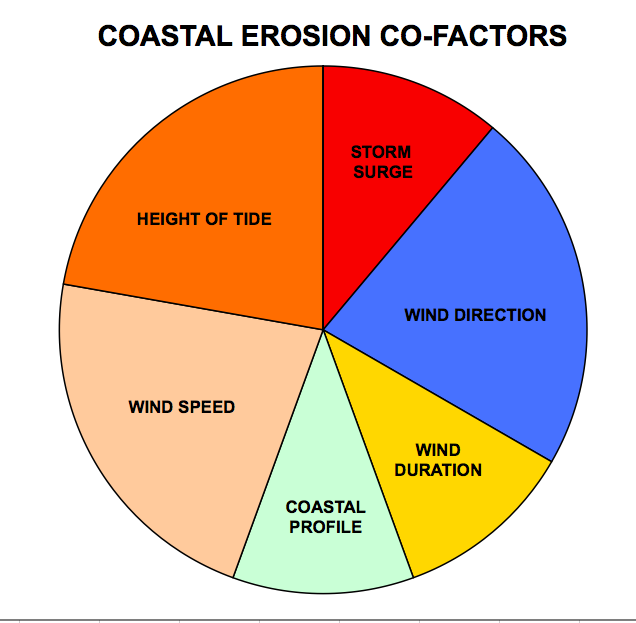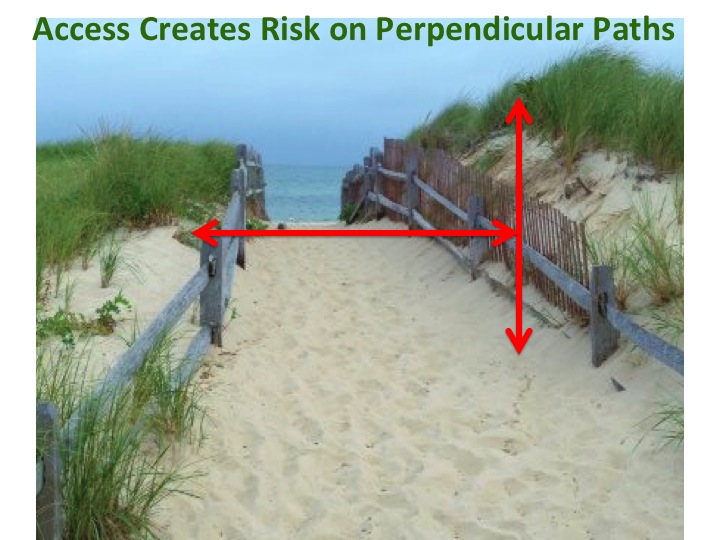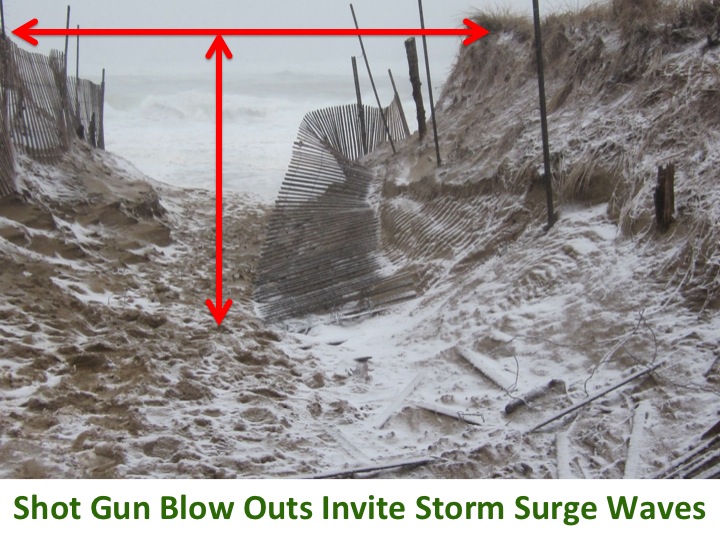The ability to quantify elements of uncertainty is at the core of Coastal Risk Management. The interaction of coastal erosion co-factors (identified in the image below) determine the degree of risk for Residential, Commercial, Municipal and Regional, interests. For instance, a full synergy of co-factors could result in exponential coastal erosion, while lesser degrees might leave areas minimally impacted. If you have coastal interests, preventing risk maybe less successful than managing risk.
The image below represents our experience driven assessment of coastal risk co-factors.
This page offers a few suggestions, including existing systems that can be improved on. Examples include reconfiguration of coastal access to redirect storm energy; retrofitting sea walls; removing high risk vegetation near power lines and the innovative strategy of Geocycling.
The First step to risk management is identifying projected risk. The image below demonstrates projected risk by showing where people intuitively create perpendicular coastal access paths with the unintended consequences of inviting storm wind blow outs and storm wave over wash.
Vehicles and people weaken native vegetation which creates less resistance to sand blowing out during storms.

Risk Management configures access in a zig-zag pattern similar to the image below, to prevent "shotgun" blow outs.
Perpendicular beach access paths are intuitive but deliver unforeseen consequences.
Seasonal beach access paths should always be diagonal, to avoid blow outs. This is not always possible. During the off season, Biomimicry (Images below) can be used to collect sand from winter storms that would otherwise cause erosion.
Image by G. Peabody.
Winter storm winds blowing along perpendicular access roads reduce elevations but elevate risk from over wash.
BULKHEAD RETRO FIT STRATEGIES
Image by G. Peabody. After assessing bulkhead failures over 20 years on Cape Cod Bay, I reconfigured the "Ideal" retro fit for existing bulkheads. We have been successful incorporating all of these in a new bulkhead and upgraded several. The weight of water behind a sea wall, is the leading cofactor in failure.
REDUCING POWER FAILURES
 Cape Cod's stalwart, native Oak trees were cut down by the 1800's and "Stately" Dutch Elms were later planted. These grew way above the safe height for storm survival and eventually were all lost. Today we have another non-native, Black Locust, which also grow above storm safe height. Their twisted limbs cannot sustain snow loads and coastal winds send branches and trees down every winter, often onto power lines.
Cape Cod's stalwart, native Oak trees were cut down by the 1800's and "Stately" Dutch Elms were later planted. These grew way above the safe height for storm survival and eventually were all lost. Today we have another non-native, Black Locust, which also grow above storm safe height. Their twisted limbs cannot sustain snow loads and coastal winds send branches and trees down every winter, often onto power lines.
GEO CYCLING
Image by G. Peabody. Construction projects may remove several hundred cubic yards of sand from basement areas. The sand is usually hauled away to a storage yard. This available sand should be considered for coastal nourishment if compatible. This strategy contributes to cost savings for disposal and cost savings for nourishment areas, which could significantly reduce risk.







